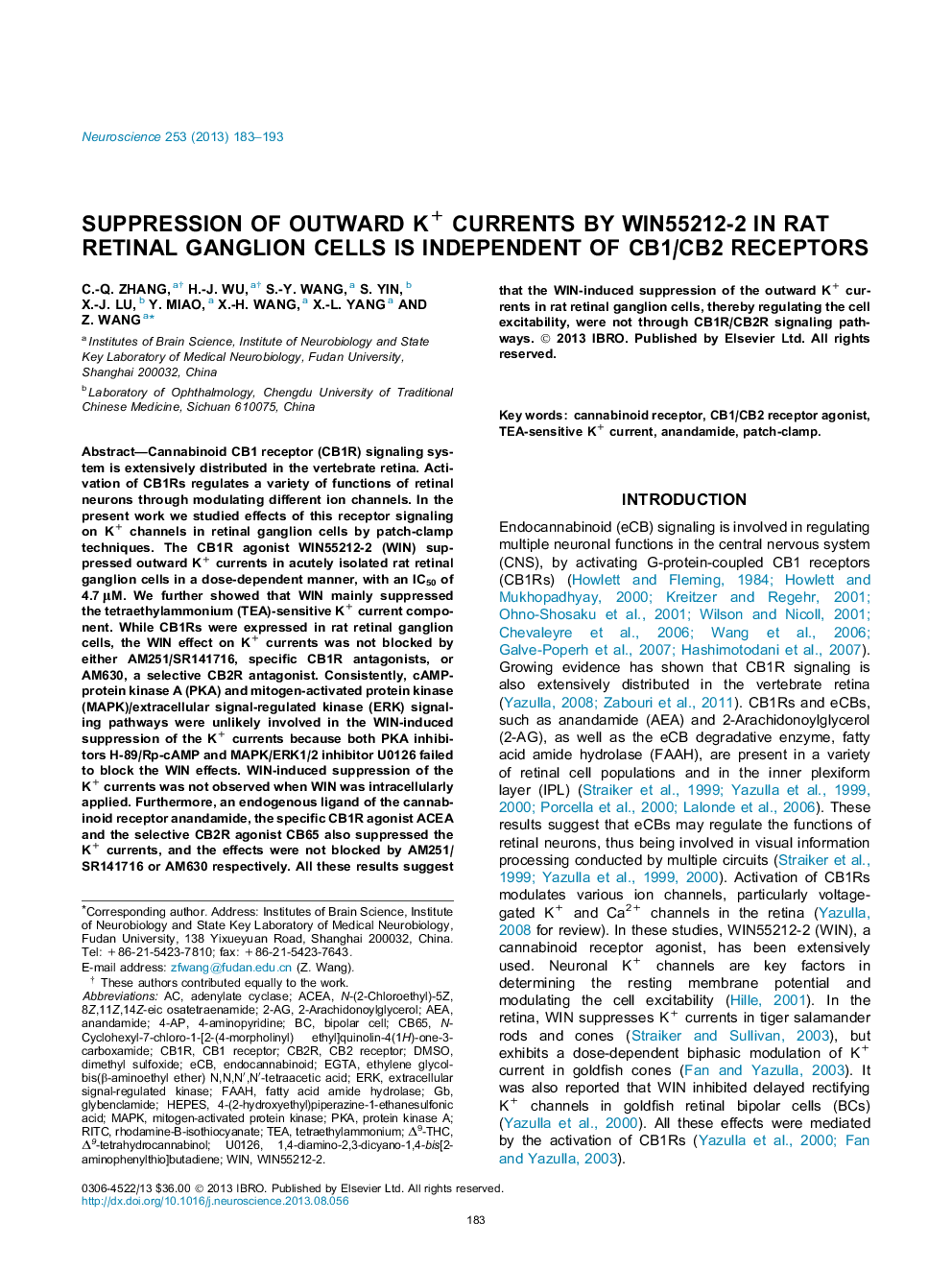| کد مقاله | کد نشریه | سال انتشار | مقاله انگلیسی | نسخه تمام متن |
|---|---|---|---|---|
| 6274325 | 1614823 | 2013 | 11 صفحه PDF | دانلود رایگان |

- WIN dose-dependently inhibits outward K+ currents of rat retinal ganglion cells.
- AEA suppresses outward K+ currents of rat retinal ganglion cells.
- WIN mainly suppresses TEA-sensitive K+ currents of rat retinal ganglion cells.
- The effects of WIN55212-2 and AEA are not mediated by CB1R/CB2R.
Cannabinoid CB1 receptor (CB1R) signaling system is extensively distributed in the vertebrate retina. Activation of CB1Rs regulates a variety of functions of retinal neurons through modulating different ion channels. In the present work we studied effects of this receptor signaling on K+ channels in retinal ganglion cells by patch-clamp techniques. The CB1R agonist WIN55212-2 (WIN) suppressed outward K+ currents in acutely isolated rat retinal ganglion cells in a dose-dependent manner, with an IC50 of 4.7 μM. We further showed that WIN mainly suppressed the tetraethylammonium (TEA)-sensitive K+ current component. While CB1Rs were expressed in rat retinal ganglion cells, the WIN effect on K+ currents was not blocked by either AM251/SR141716, specific CB1R antagonists, or AM630, a selective CB2R antagonist. Consistently, cAMP-protein kinase A (PKA) and mitogen-activated protein kinase (MAPK)/extracellular signal-regulated kinase (ERK) signaling pathways were unlikely involved in the WIN-induced suppression of the K+ currents because both PKA inhibitors H-89/Rp-cAMP and MAPK/ERK1/2 inhibitor U0126 failed to block the WIN effects. WIN-induced suppression of the K+ currents was not observed when WIN was intracellularly applied. Furthermore, an endogenous ligand of the cannabinoid receptor anandamide, the specific CB1R agonist ACEA and the selective CB2R agonist CB65 also suppressed the K+ currents, and the effects were not blocked by AM251/SR141716 or AM630 respectively. All these results suggest that the WIN-induced suppression of the outward K+ currents in rat retinal ganglion cells, thereby regulating the cell excitability, were not through CB1R/CB2R signaling pathways.
Journal: Neuroscience - Volume 253, 3 December 2013, Pages 183-193